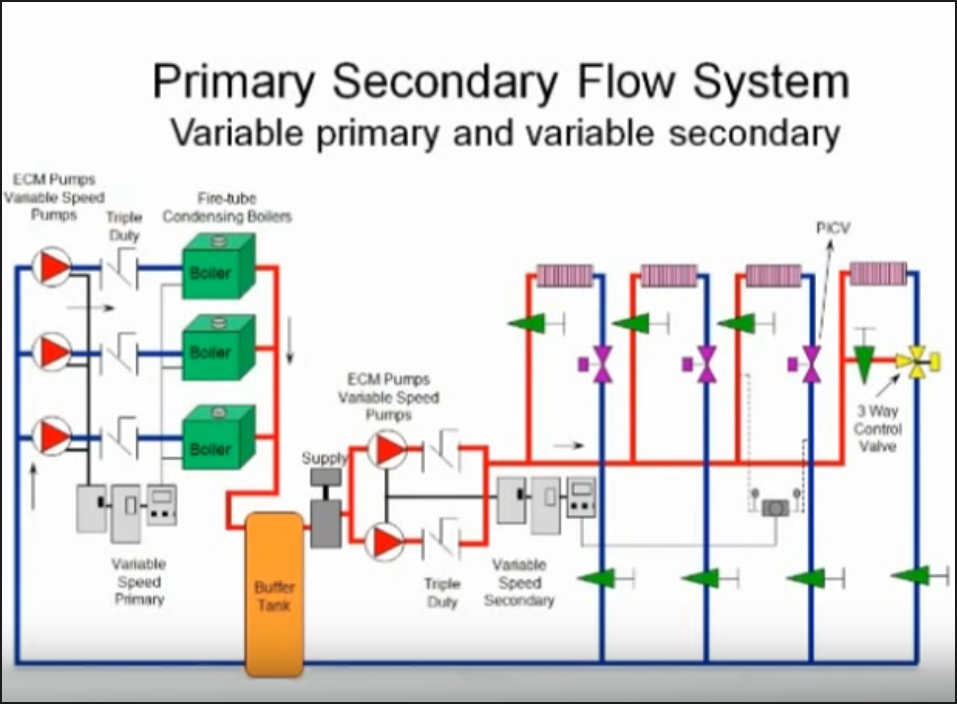Understanding Primary Secondary Pumping Part 2: Mixing Temperatures (and Flows!) in a Hydronic System
/By Chris Edmondson
What happens in a pipe when water of two different temperatures (and perhaps different flow rates) merge?
There’s a pretty straightforward formula that tells you exactly what the resultant water temperature will be. In this blog, we’ll go over that calculation, as well as take a closer look at how blended temperatures


